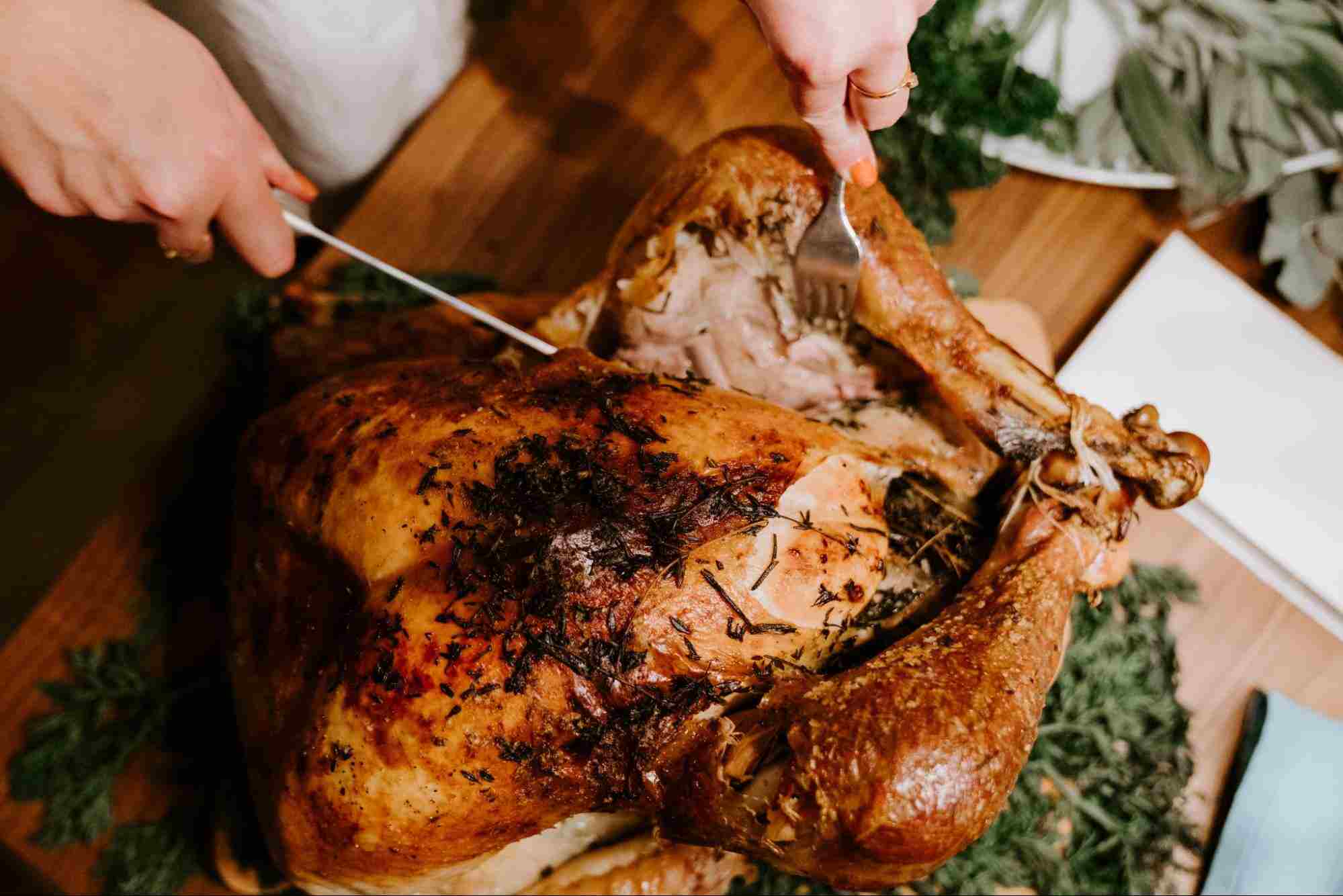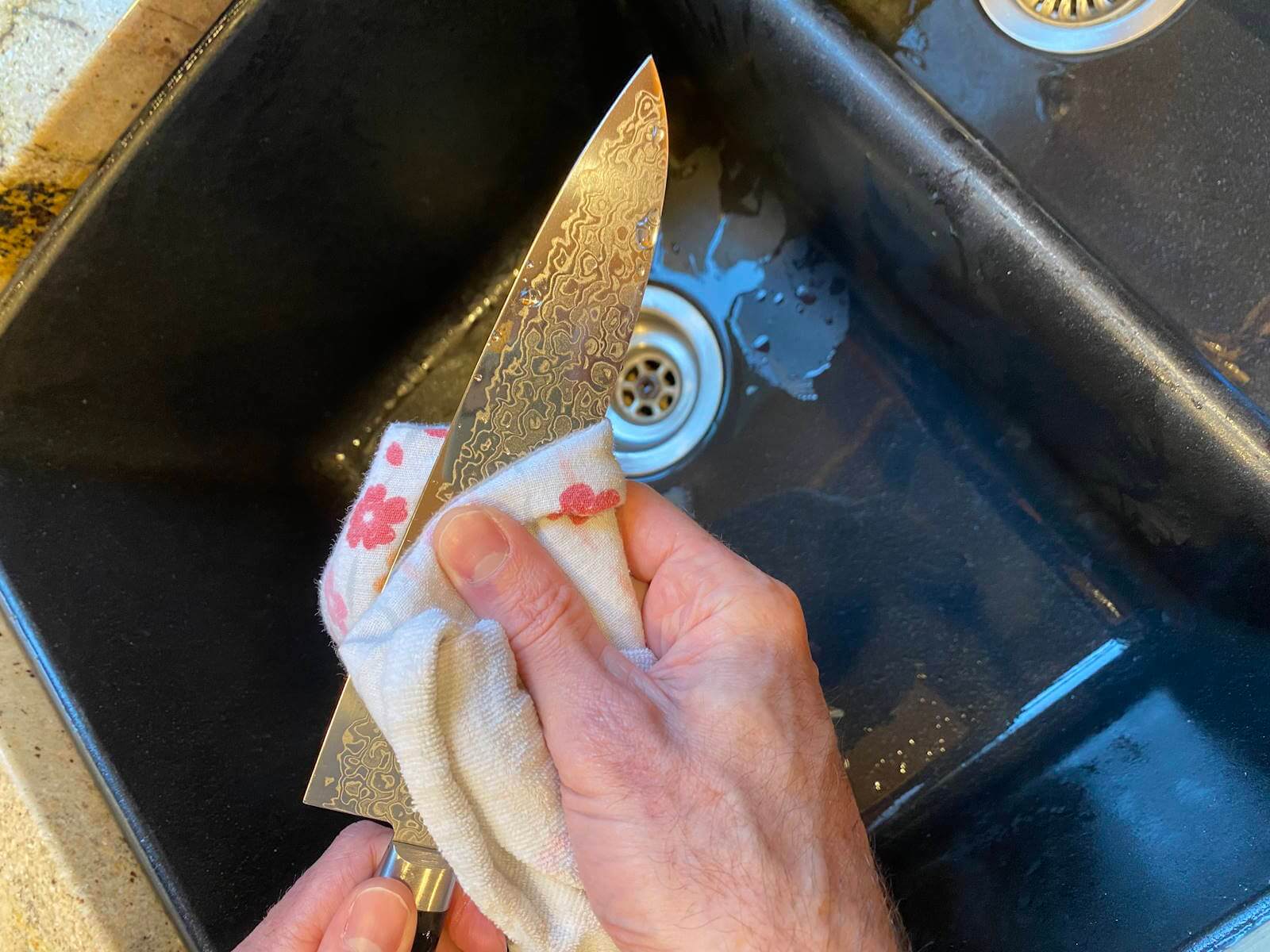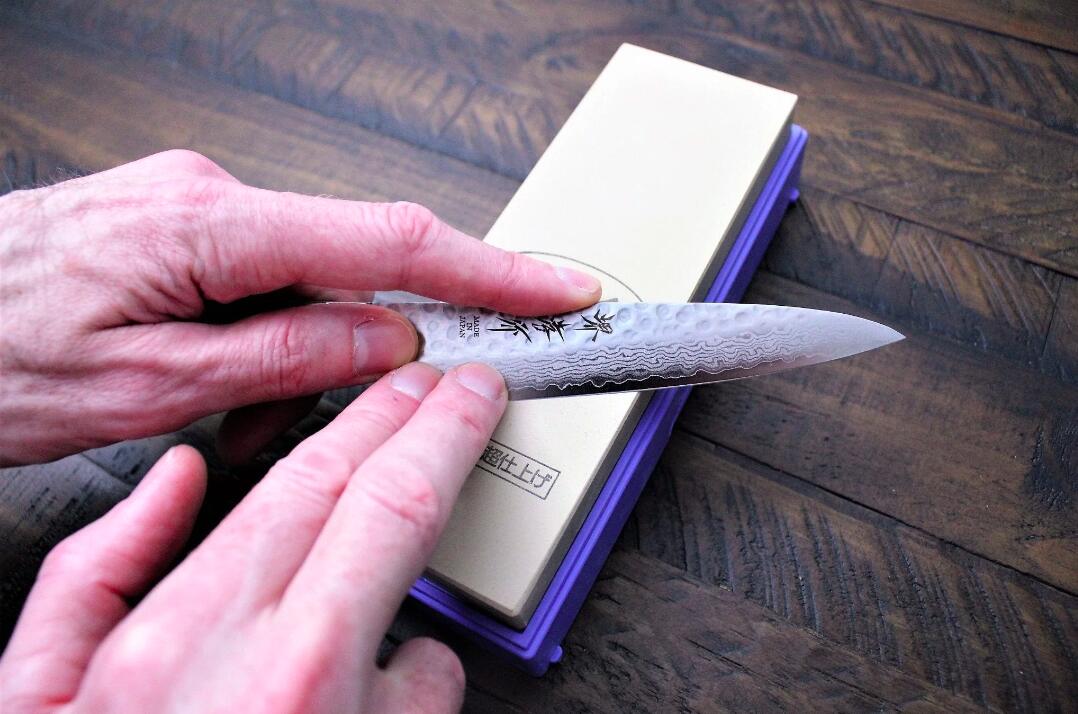
The Seven-Faced Bird: How to Carve a Turkey Using Japanese Knives
Few dishes rival the grandeur and significance of a turkey. Symbolizing abundance, gratitude, and togetherness, it’s the centerpiece of every festive dining table.
But while a beautifully-roasted turkey is a sight to behold, its true sumptuousness is unlocked when carved with precision and skill. Proper carving technique not only ensures an impressive presentation but also enhances your guests’ eating experience. Each slice should be tender, juicy, and expertly cut to showcase the meat’s rich textures.
The turkey holds a charming moniker in Japanese; "shichi men chou," meaning "seven-faced bird." This poetic term originates from the turkey's unique appearance — they boast bare skin instead of feathers on their faces. As a result, their faces can change colors into various hues and miens.
Drawing inspiration from this cultural reference, let’s explore the "seven faces" of how to carve a turkey like a samurai!
First, We Gather the Tools
Before we embark on our task, we must gather some essential tools to make this culinary art a breeze. A good turkey knife, a reliable carving fork, and a broad cutting board are must-haves in any carver's toolkit.
We highly recommend employing the precision and craftsmanship of Japanese knives for a seamless and delightful experience. They are renowned for their sharpness, balance, and ergonomic design that facilitate effortless cutting and carving.

Our top picks for learning how to carve a turkey are:
- A Gyuto (chef's knife): The versatile Gyuto is the ideal companion for slicing through a turkey's breast and larger cuts. Its curved blade allows for smooth motions, making it easy to cut the meat with precision.
- A Sujihiki (slicer knife): With its long and narrow blade, the elegant Sujihiki knife also excels at creating precise slices of turkey breast because of its sharp edge. It guarantees clean cuts without tearing the meat, resulting in beautifully-thin and even portions.
- A Honesuki (boning knife) or Deba knife: For more complex tasks, such as separating the joints and removing the prized oyster, the Honesuki or Deba knife is the perfect choice. Their sturdy and precise blades allow easy maneuvering around bones and joints, ensuring every bit of succulent meat is extracted.
These Japanese knives will infuse the carving process with a touch of magic and ensure you present a masterpiece.
Preparing the Turkey
The turkey’s mouthwatering aroma may whet your appetite when you take it out of the oven, but you must resist the temptation to carve it right away. Allow the bird to rest for about 20 to 30 minutes. This crucial step ensures the juices redistribute throughout the meat for optimal tenderness and flavor.
Delicately undo the trussing and remove any kitchen accessories from the turkey as you wait. Also, untie the legs and remove the stuffing, making sure to save it for serving.
The best way to carve a turkey is with its breast facing up and legs pointed away from you. This position keeps it stable as you carve, allows access to all parts of the bird, and ensures flow from one cut to the next.
The Seven Faces of Carving
With the meat rested and your Japanese turkey knives ready, it's time to begin.
Face 1: Removing the Drumsticks
The first face we'll unveil is the art of how to carve turkey drumsticks with finesse. The Gyuto is the best knife for this task.
Begin by locating the joint where the drumstick meets the thigh near the top of the leg. Place the edge of the knife at the joint, and slice through the soft tissue with one swift motion. The Gyuto should effortlessly part the juicy leg from the body, but remember to be careful of the knife’s sharp edge.
Face 2: How To Carve Turkey Thighs
Same as with the drumsticks, locate the natural seam where the thigh connects to the turkey's body. Cut through this fold until you get to the bone, then bend the thigh backward until the joint is visible.
The Honesuki, with its robust and precise blade, is the best turkey knife for the job. Place it at the joint and use gentle, controlled strokes to free the thigh, allowing the knife's sharp edge to glide through the rest of the meat with as little friction as possible.
Once separated, hold the thigh steady and glide the blade along the bone to cut the meat into even slices. Here is where the Sujihiki slicing knife shines, enabling neat cuts for a beautifully-presented dish.
Face 3: Slicing the Wings
This operation will be exactly like the leg joint. Locate where the wings connect with the turkey’s body and cut through to the bone. Pull back the wings until the joint is revealed and then carefully slice through the joint and the rest of the meat to separate them.
Face 4: How To Carve Turkey Breast

Now it is time to move to the breast, the crowning glory of the turkey. Locate the breastbone, which runs vertically down the center of the turkey's chest. This firm bone will serve as your reference point for your cutting. Gently make long, deep cuts along either side and place the chunk of meat on your cutting board.
Then, using smooth, controlled strokes, carve thin, perpendicular slices, taking care not to separate the skin from the juicy meat. The Gyuto's exceptional sharpness allows the blade to glide effortlessly through the tender skin, ensuring each slice is perfectly carved.
Face 5: Removing the Oyster
This would not be a complete guide on how to carve a turkey if it did not delve into the art of removing the oyster, a hidden delicacy nestled between the thigh and the spine.
This spoon-like bone cradles a super tender and fatty piece of meat that boasts the most succulent and flavorful essence of the entire turkey. The finesse of the Honesuki or Deba knife is just what you need to locate the oyster and carefully extract it.
Face 6: Placing the Oyster and Juices
The oyster and its flavorful juices are a delectable addition, infusing the meat with richness and depth. Drizzle the collected juices over the other succulent slices of turkey.
Face 7: Presentation
Knowing how to carve a turkey is one thing, but knowing how to present it with style is another. A stunning presentation elevates the meal experience for your guests.
Select a spacious, elegant serving platter that can comfortably accommodate all the carved turkey pieces without crowding. Then, arrange the main cuts in the center of the platter as the focal point. Arrange the slices neatly but slightly to create an appealing presentation.
Place the drumsticks and thighs at an angle on either side of the breast and tuck the wings under the body.
Finally, garnish with vibrant fresh herbs like rosemary and thyme sprigs, or slices of citrus fruits. These will not only add color but also complement the turkey's flavors.
Master How To Carve a Turkey With Hasu-Seizo
There you go, time to enjoy your turkey. We hope this "Seven-Faced" technique will help you impress your guests during the holidays.
With precision Japanese turkey knives like the Gyuto, Sujihiki, Honesuki, and more, you can achieve seamless, precise cuts that enhance both the presentation and flavors of the turkey.
Check out our collection of authentic, top-quality Japanese knives to find the perfect knives to elevate your carving prowess today!


